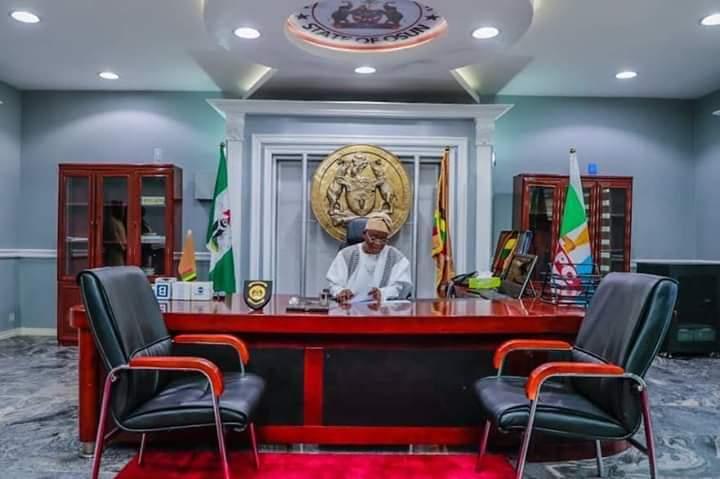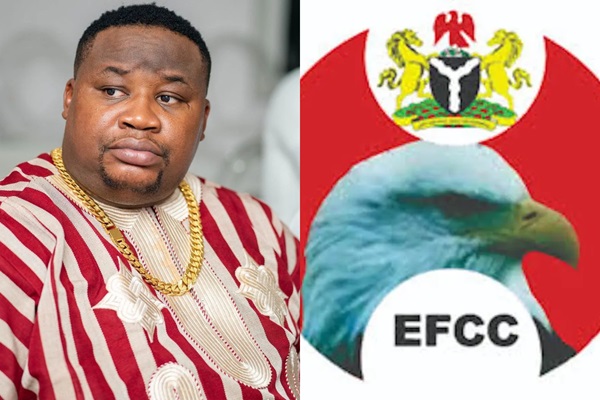By Olowogboyega Oyebade
Do you know that Mr. Gboyega Oyetola has come at a good time, a time of Christmas season? Are you aware that this season is noted for its convivial touch and happiness? Do you know that there are two types of holidays… movable and immovable holidays in Nigeria? Do you know that Christmas season throws up three immovable holidays …. Christmas Day (25th December) holiday, Boxing-Day (26th December) holiday and New Year day (1st January) holiday? Are you aware that the other immovable holidays in Nigeria are Workers’ Day (1st May), Children’s Day(27th May), Democracy Day (29th May) or (12th June), Independence Day (1st October)? Do you know that Nigeria equally has movable holidays? These include: Mawlid Muslim holiday, Eid al-Adha Muslim holiday, Eid al-Fitr Muslim holiday, Good Friday and Easter Monday. We have the Ise se holiday for the traditional religion adherents.
Do you know that Christmas has become more or less a cultural celebration among billions of people around the world? Are you aware that the season is Dollar-denominated as billions of Dollars will be spent on gifts, decorations and conspicuous consumption by billions of holiday-makers around the world? Do you know that the season carries major risk with equal strength? Do you remember the 2012 bombing of some churches on Christmas Day in some parts of the North East of Nigeria with devastating payloads? Do you know that apart from all these cosmetics, naked or ugly, the period is clement to set new agenda, particularly for a new government like Oyetola’s administration? .Do you know what we call agenda? Come along, please.
Hurray! Mr Gboyega Oyetola started very well. Last Thursday, his administration took off with a well- attended inter-faith ceremony held in the Secretariat, Abere. Every body was there. The traditional rulers in large numbers came. The leaders of faith came. All the beneficiaries of Aregbe’s Social Protection initiatives turned up in large number. The Iyaloja gave good account of themselves in songs and dances to usher in the new helmsman. The workforce came in their thousands and the ‘Omoluabi’ State Boys marked their usual festive presence but without the charge of ‘ Yiyo lekun n yo…! “ Our D.J Bassman had little pep to add and the ‘Cultural Troupe displayed new acrobatics to woo the new captain into the ‘hall of culture’. In all, the joy was full and the crowd was heavy all singing ‘Ileri Oluwa ti se.’ And now the second session came. It was a formal meeting with all heads of Ministries, Departments and Agencies. Mr Governor seized the occasions of the two inter-faces to open the policy thrusts of his administration. Our Governor gave very good account of himself, first as a comrade and later an administrator swaggering with open-door policy. It could not be better.
Last Friday, Mr Gboyega Oyetola capped it up with the formal meeting with all the heads of departments in all Ministries, Departments and Agencies including the Local Governments. The fruitful engagements of all segments of the work-force were enough testimonies of good days ahead. He enjoined all labour unions to engage mostly in dialogue rather than resorting to stronger persuasions that might not be result-oriented. The time to set agenda is on.
Have you read Walter Lippmann’s 1922 book titled “Public Opinion”? He titles a chapter in that book: “The World Outside And The Pictures In Our Heads”. Lippmann argues that the mass media are the principal connection between events in the world and the images in the minds of the public. In 1963, Bernard Cohen observes that the press “may not be successful much of the time in telling people what to think, but it is stunningly successful in telling its readers what to think about. The world will look different to different people depending on the map that is drawn for them by writers, editors, and publishers of the paper they read.” It may be against this background that Section 22 of the 1999 Constitution (as amended) instructs the press and similar agencies to hold government accountable on its compliance with the provisions of Chapter 2 of the Constitution.
Certain prescriptions are identified before a good agenda-setting role can be achieved. These prescriptions are reduced to models by Max Mc Combs. They are: the awareness model, the priorities model and the salience model. Rogers and Dearing identify three types of agenda-setting, namely: public agenda setting in which the public’s agenda is the dependent variable, media agenda setting in which the media’s agenda is treated as the dependent variable, policy agenda setting in which elite policy makers’ agendas are treated as the dependent variable. What do we really mean by agenda? Come along,.
Do you know that agenda literally means “the things that must be done”? Are you aware that when a new administration comes into power, new agenda are set? Do you ask why is it that when a new administration comes on board, the first political appointment to be made is the Press Secretary/ Media Adviser? Do you know that a new administration must get it right? And more. Do you know that the agenda an administration sets may be political, economic, social and cultural? A political agenda is a list of problems to which government officials as well as individuals outside the government are paying serious attention at any given time. It is often shaped by political and policy elites. When there is a great time difference between taking decisions and results of an agenda, it is called a political agenda lag. The “Political Agenda Effect” theory asserts that when citizens from different backgrounds get together in one accord on a particular agenda, their agenda will change in a way that takes their demands away from elites to focus more on public goods. Do you know that research shows that the ‘political agenda effect’ of the people may generate ‘escalation effect’? The “Escalation Effect” theory contends that if citizens get together, this will induce elites to group together to defend their integrity and power.
Do you know that political agenda have three main models? Let us remember Roger Cobb and his apologists. They came up with three models of political agenda- building. The models are: the outside initiative model, mobilization model, and inside initiative model. These models are designed to show the different ways the political agenda changes. The more homogeneous a society is, the higher the ability to achieve agenda status. The Outside Initiative model discusses the process where issues arise in non-governmental organizations and then are expanded to reach the formal agenda. The order of events starts with a grievance, an expansion of interest supported by non-governmental groups, and then an exertion of pressure onto decision makers. The outside initiative model is most prevalent in egalitarian societies. We must say that this model is alien to Africa. The Mobilization model is focused around political agenda issues that are initiated within government and subsequently reach the public agenda and formal agenda status. Its focus is on the internal mechanism and how politicians work to get ideas formalized onto the agenda. However, success in implementation does require support from the public under this model as well. The mobilization model is most commonly linked with hierarchical societies, or those societies which emphasize a wide gap between the leader and his or her followers.
The Inside initiative model describes when issues are initiated within government, but supporters make no effort to expand it to the public. It is a model that is opposed to public participation. Instead, supporters of the issues rely solely on their own ability to apply the right amount of pressure to ensure formal agenda status. The inside access model is most often seen in societies with high concentrations of wealth and status. It must be noted that the political agenda facilitated by these models is essentially defined as what governmental officials find important to discuss. It is a fact of life particularly in presidential executive system that those people closest to the policy process have the biggest control on what issues reach the political agenda that will be executed by an administration. They are the ones with the most power to decide which ideas or issues have the most importance, and which ideas or issues are unimportant for the mass of the people. Do you know that there are some groups of people that force agenda to come to table? Yes!
Some of these groups are generally labelled non-governmental groups. These groups work to put continuous pressure on government leaders to shape the agenda. . Private sector lobbyists affect the political agenda by influencing the decisions and ideas of political leaders. When large-scale private corporations have a vested influence in a policy area, they can use their power to try to either keep or eliminate an issue from the political agenda. The power of private sector lobbyists is made even stronger with the trend of revolving door lobbyists. This is when those who previously worked within government and gained knowledge of it, then enter the private sector to lobby. When those people who once served as public officials go into the private sector, they can work to influence their former colleagues.
The influence of the “Think tanks” to shape political agenda is enormous. Most times wealthy and established investors who wish to advance a certain idea onto the political agenda establish them. These issues may include: taxes, foreign policy, global development, education, children and families, or healthcare or environment.
Another agent that influences political agenda is our court. When the courts make a decision that changes a previous line of thinking, that idea immediately is on the political agenda because laws and public administration must change accordingly. Other socio-cultural factors that can influence political agenda are the world events around us. When something unexpected happens it can force the political agenda to change immediately. Tragedies and disasters have ways to regulate our lives. Do you know that there are various theories on how political agenda are set? Come along, please.
There are three main theories on how political agendas are set. These theories are based on which groups have the greatest say in the decisions regarding these agenda. We have: the pluralist theory, the elitist theory and the institutional theory. The pluralist theory is of the opinion that policy-making is divided into several “arenas”. Groups that do not have any power in one particular arena, most often have power in another arena. There is a marketplace for competing policies, and interests, and any group may win the arena. Elections are seen as the best determinant of who gets to decide on each public policy after elections are won.
The elitist theory propagated by Adams and his apologists holds the view that government is a very serious business that should not be trusted into the hands of mediocre. It contends that a main power elite should dominate the entire agenda setting process to serve its own interests. These interests hold the power in all the arenas and they always win every election. There are very few people that actually organize into separate interest groups. In order to retain power and control, the main elite works at keeping key issues off the agenda. This suppression of issues makes the elites to be seen as a cult and perceived by the opposition as a threat to democracy. According to the Institutional Theory, power should reside in institutions rather than persons. It believes that legislative committees and bureaucratic institutions are the main controllers of the agenda and should be allowed to perform unfettered.
Do you know that all agenda are always tagged ‘people’s agenda’? Do you know that American Political Agenda under President Trump is ‘America First’? Do you know that this protectionist tendency is fast making the once glorious United States of America to be seen as a pariah in the world? Do you know that its stand to promote trade rather than morality in the murder of that ace journalist, Khashogi by agents close to the Crown Prince of Saudia Arabia is opening another chapter in international diplomacy? We must always draw the checklist of what constitutes “People’s Agenda”.
We remember Thailand. Its Prime Minister, Abhisit Vejjajiva came in 2009 at a time when the economy of his country was in distress. He declared a new agenda. On the 12 August, 2009, he declared 15 years free qualitative education policy at all levels with the aim to lessen the financial burden of parents as well as stimulating the economy. Do you know that like Aregbe’s education, Thailand’s free education covered expenses for books, utensils, uniform, school equipment, and extra-curricular activities? On 19th November, 2009, the Prime Minister followed up the development matrix of the ‘People’s Agenda’ when he declared that People’s Agenda must rest on three pillars, namely: restoring investor’s confidence, new investments to improve national competitiveness, and investments in people. The new deal aimed to solve Thailand’s four crises; Unity crisis, Cost of living and poverty, Competition crisis, and Moral Crisis.
The targets of the agenda were to increase employment and income, restructure public debt, improve and resolve problems related to living conditions, quality of life, and community environments. It aimed to create economic security and social stability for senior citizens, as well as ensuring that everyone was provided with access to cost-free education to promote stable economic growth. According to the Prime Minister, the economy under People’s Agenda must be a “Quality Economy” where growth must not be measured by just one year. Growth must be balanced and with stability. It must be sustainable and justiciable.
In the bid to jump-start the economy, a replica of Áregbe’s Life-Long Academy was popularized among the artisans and the old people in Thailand. To consolidate this gain, the government on 9thApril, 2009, initiated the old-age pension fund for old-age citizens who do not have a retirement programme at all. Senior citizens at the age of 60 years and above who did not have any retirement benefits were made eligible to receive 500 baht (an equivalent of #5,500) monthly like the ‘Agba Osun’. That policy was to increase senior citizen’s contribution to society, right to dignity, and security. The aim was to reduce poverty of old-age citizens.
The Prime Minister introduced Farmer’s Income Guarantee. to guarantee the income of Farmers. Various intervention programmes were done in agriculture to bring about food security, reduce poverty and escalate economic growth. He went ahead to introduce Conditional Cash Transfer popularly called “Help-the-Nation” Cheque. The aim was to boost the purchasing power of low-income earners and encourage spending. That initiative was done for people that had already registered with he Social Security Fund to boost the GDP and create 80,000 jobs. This initiative was followed by “Training for Unemployment”. The project’s objective was to train and create jobs for 500,000 unemployed, soon to be unemployed and new graduates to reduce and prevent unemployment. Furthermore, it was to promote independent occupation that would help drive the economy at grassroots level. Do you know that the government of Thailand had to develop training schedules in 935 courses that were to be offered in Technical Colleges (Life Academy)? There were 118 courses in agriculture and processing. There were 319 courses in the manufacturing sector. There were 298 courses in Services and Tourism. There were 12 courses designed for Trade and Economic Sufficiency. There were 117 courses designed for Computer and Administration. There was one course designed for Transport and Logistics. There were 23 courses designed for the Construction sector. It is against this background that we urge the new administration to pursue vigorously the policy of Life Academy among other legacies, left behind by Ogbeni Rauf Aregbesola to arrest the social exclusion in our country.
In a desperate bid to jump-start the economy, the Government dabbled into the issue of Informal Debt. It aimed to help loaners who were in debt to high-interest rate money lender, to shift their debts to formal financial institutions like Omoluabi Bank where interest rates are lower. The Government issued Debt reduction cards to prevent people returning to informal debt. Many people were registered under the government’s debt refinancing scheme. The maximum loan that a debtor can loan is 200,000 baht with a maximum of 10 year installment plan. Through the programme, the government had reduced informal interest from informal debt significantly.
Do you know that there are two primary assumptions of Agenda Building identified by Cobb and Elder which we must note? The first is that the attention capabilities of government are necessarily limited. The truth is that there are always more matters vying for attention than can be actively considered by any government. The second assumption is that policy problems are not easily identified in the open. The key-word is patience.
We are sure that Osun is in very safe hand. The Governor is a thorough-bred finance expert. He is a story of success in Nigeria before his ascension to power. His calmness, humility and ready heart will work wonders in the weeks and years ahead. This Christmas is certainly very special to the people of the State of Osun. A voice in the spirit of Christmas resonates:
“Uno us a child is born,
Unto us a son is given,
The kingdom shall be upon his shoulders and
He shall be called wonderful counsellor…”
Welcome! Ileri Oluwa ti se!











